Color is just what you think of; the visible reds, oranges, yellows and variations that you see in the rainbow.
Every color has a value, or tone, which is the lightness or darkness of each hue …
… and the lights or darks of colors can be translated to heir equivalent number in a shade of gray.
Being able to accurately translate colors to their gray equivalents is an essential skill for drawing realistic pencil portraits from color subject matter or vice versa.
It’s a matter of training your eye, and until you get very comfortable with the concept, a value scale will be immensely helpful.
Gray scales are available for purchase at any art store, and you can make your own as well. I like the kind pictured here, because there’s a hole that you can use to surround each swatch on your reference with each value to find the closest match.
Once you determine the value of the color, it’s a simple matter of building up layer after layer of graphite until you match the value in graphite.
In order to really get a hold on this concept, you should make your own value scales as well. Make one in black, and one for each of the three primaries.
The darkest possible value for any color a number 1, the lightest is a number 10. If you do your work carefully, the cross section of each color should be the same value, as seen on the example here.
To practice using this concept in your artwork, try using a black and white photo and creating a painted portrait in color with matching values.
You can either use realistic flesh tones or not; the same purpose can be accomplished if your skin is green, or purple, or anything else.
To see how well you did, scan in your painting and use a photo manipulation program to discard the color information and change it to black and white.
If you did a perfect job, you won’t be able to tell a difference between your painting and the original photo.
This is a very simple concept, but it’s easy to forget and hard to put into practice; especially continuously and consistently. If you want to be a better painter, however, this is where you need to concentrate.
Realism is all about showing dimension, dimension is a matter of using lights and darks to create the illusion of depth, and lights and darks are simply value.
If you want to capture a life-like appearance, it is far more important to capture the right value than the right color.
Want To Learn More…

So many would-be artist’s overlook this vital foundation when they begin learning to draw. So from there they became disheartened, loose interest and put it in the “too hard” basket.
If you are a quick learner then great but some of us will take a little longer to pick up the required knowledge.
This isn’t a problem. In fact, when you do master it, because you had to work a little harder, you often have a more thorough grasp of the basics.
With that said we have created ‘Photorealistic Portraits’ which builds on your drawing knowledge to take your portrait drawings further.



